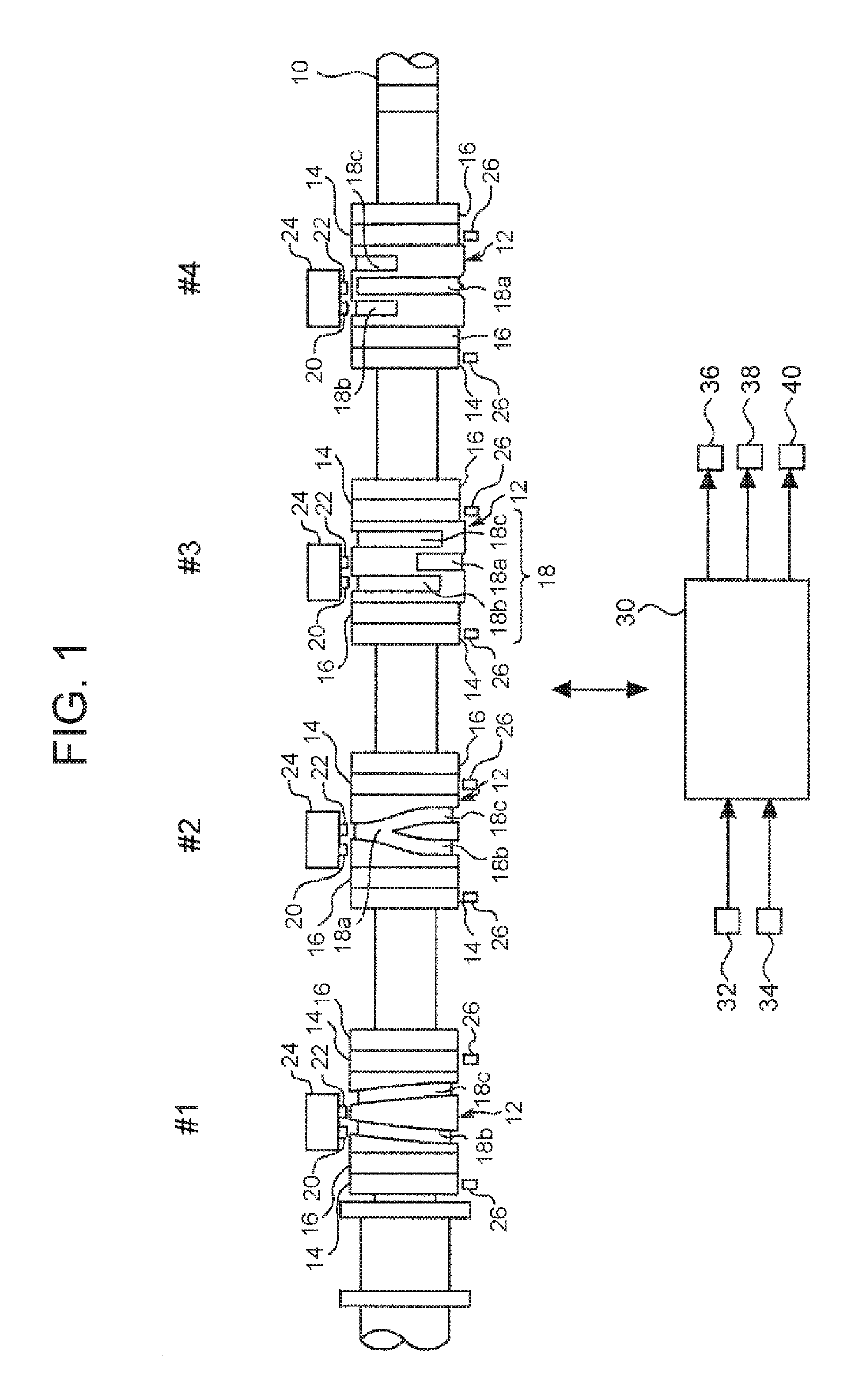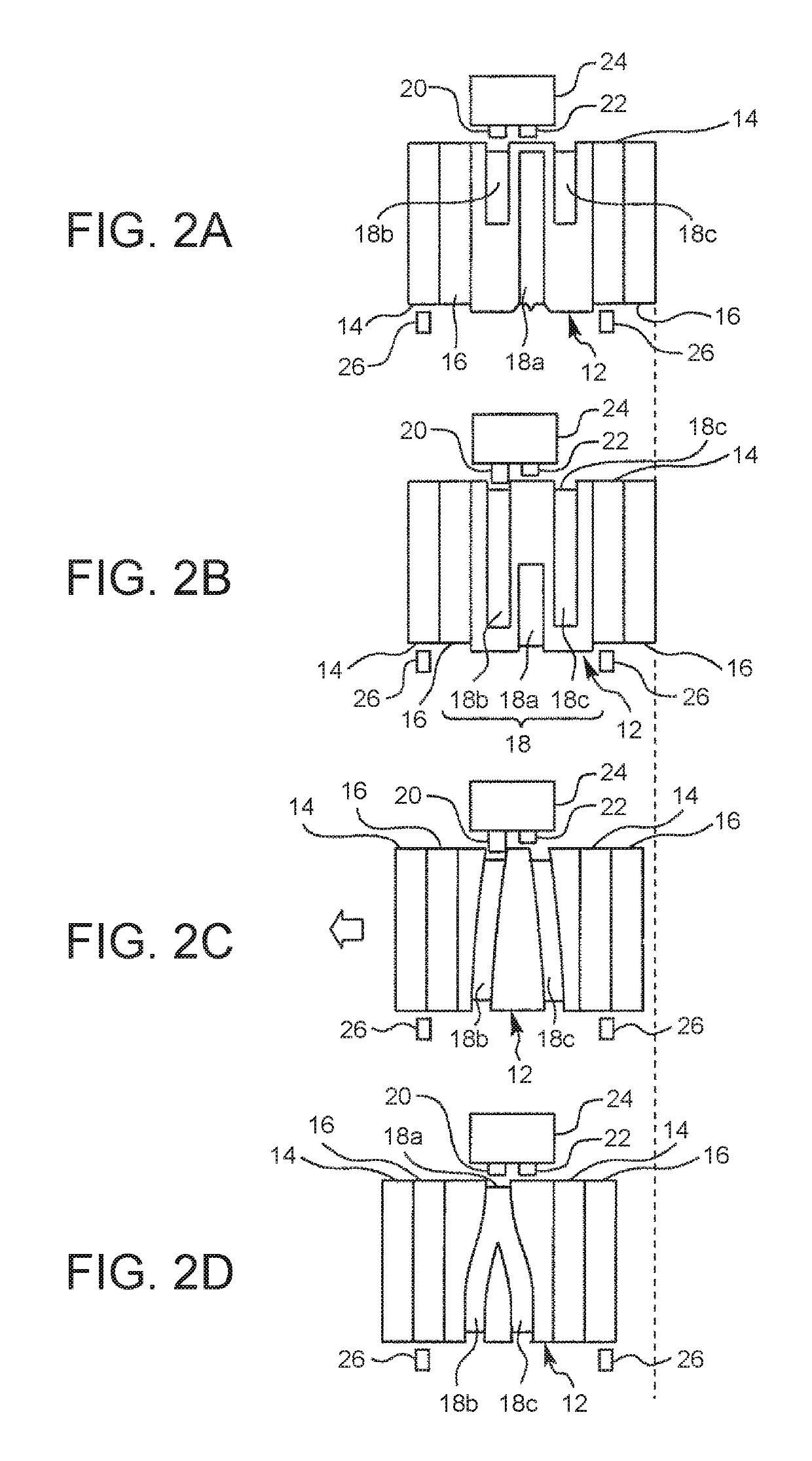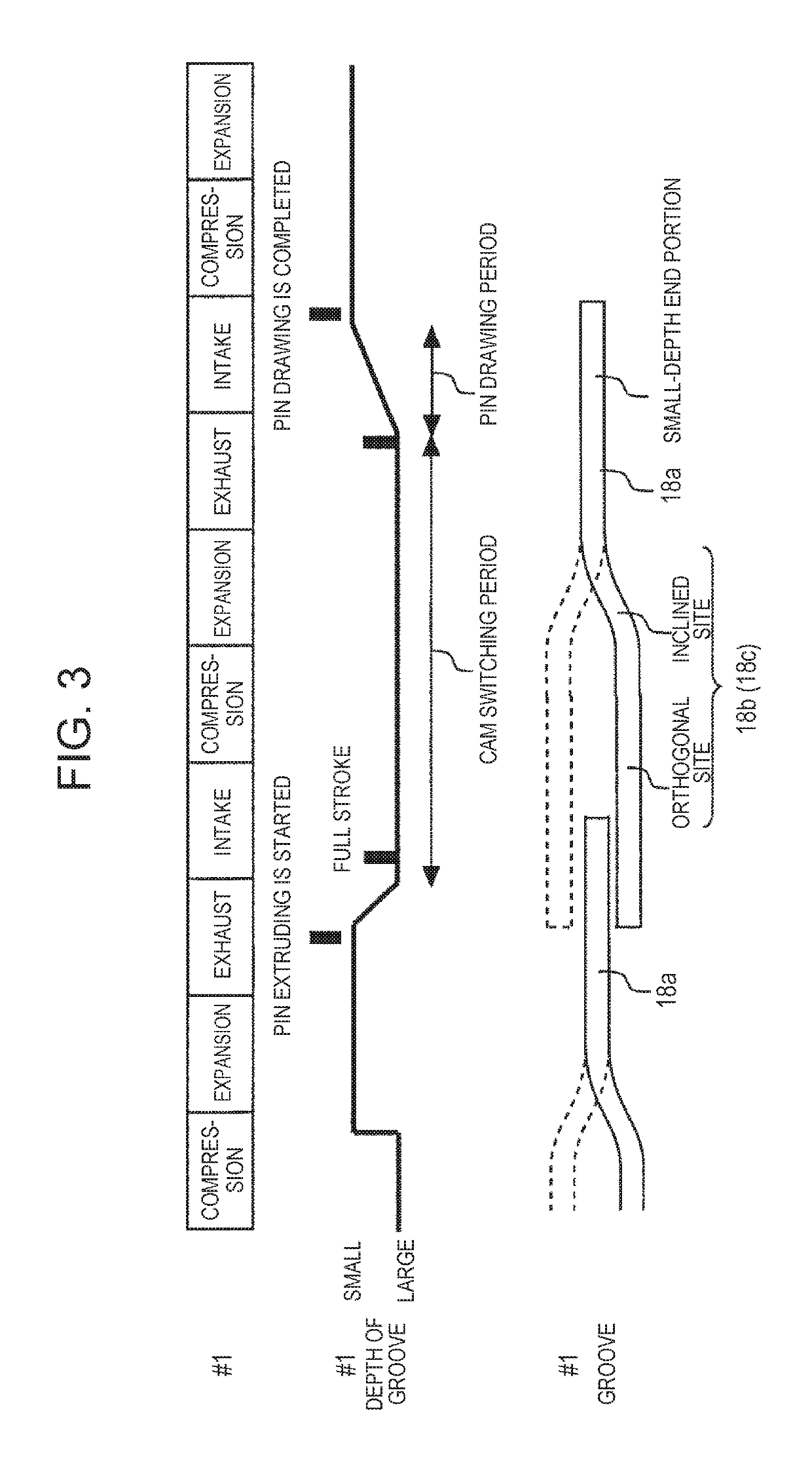Internal combustion engine system
a combustion engine and internal combustion technology, applied in the direction of machines/engines, non-mechanical valves, valve drives, etc., can solve the problems of above-described problems relevant to the combustion state, the change to the start profile does not necessarily succeed, and the unstable combustion state of the cylinder for which the change to the start profile is not completed, etc., to shorten the suspension time of the combustion.
- Summary
- Abstract
- Description
- Claims
- Application Information
AI Technical Summary
Benefits of technology
Problems solved by technology
Method used
Image
Examples
first embodiment
[0025]To begin, the disclosure will be described with reference to FIGS. 1 to 5.
[0026]FIG. 1 is a schematic diagram showing an exemplary configuration of a system according to the first embodiment of the disclosure. The system shown in FIG. 1 is a system of an internal combustion engine that is mounted on a vehicle. The internal combustion engine is a four-stroke reciprocating engine, and is an inline-four engine. The firing order of the engine is the order of a number one cylinder #1, a number three cylinder #3, a number four cylinder #4 and a number two cylinder #2. The number of the cylinders of the engine may be two, may be three, or may be five or more. Further, the firing order of the engine is not particularly limited.
[0027]A valve train shown in FIG. 1 includes a camshaft 10. The camshaft 10 is connected to a crankshaft (not illustrated) of the engine, and rotates in synchronization with the crankshaft. On the camshaft 10, four cam carriers 12 formed as hollow shafts are dis...
second embodiment
[0057]FIG. 6 is a diagram showing an exemplary processing routine relevant to the start-time control that is executed by the ECU in the disclosure. The routine is executed whenever the start request for the engine is output, similarly to the routine shown in FIG. 5. The processes shown in the routine is basically the same as the processes in the routine shown in FIG. 5. Specifically, the processes in steps S16, S18, S24, S26 and S28 of FIG. 6 are the same as the processes in steps S2, S4, S10, S12 and S14 of FIG. 5. In the following, the processes in steps S20 and S22 of FIG. 6, which are partially different from the processes in FIG. 5, will be described.
[0058]In step S20 of FIG. 6, the above-described switching command is output to a solenoid actuator corresponding to the small-cam cylinder. As described above, it is found what cylinder is the small-cam cylinder, at the end time of the stop-time control. In the process in step S20, the small-cam cylinder is specified based on that...
third embodiment
[0062]FIG. 7 is a diagram for describing an exemplary during-stop control in the disclosure. In the example of FIG. 7, the stop request for the engine is output at time t1, and the engine speed becomes zero at time t2. The switching of the driving cams of the number one cylinder #1, the number three cylinder #3 and the number four cylinder #4 is performed in a period from time t1 to time t2. However, the switching of the driving cam of the number two cylinder #2 is not completed. So far, the content of the stop-time control is the same as the content of the stop-time control described in FIG. 4.
[0063]At time t2, it is found that the number two cylinder #2 corresponds to the small-cam cylinder. Hence, in the example of FIG. 7, at time t7 after time t2, the powering drive of the motor generator is started, and the crankshaft is rotated. By the rotation of the crankshaft, the stop position of the cam carrier is moved. In the example of FIG. 7, the drive of the motor generator is contin...
PUM
 Login to View More
Login to View More Abstract
Description
Claims
Application Information
 Login to View More
Login to View More - R&D
- Intellectual Property
- Life Sciences
- Materials
- Tech Scout
- Unparalleled Data Quality
- Higher Quality Content
- 60% Fewer Hallucinations
Browse by: Latest US Patents, China's latest patents, Technical Efficacy Thesaurus, Application Domain, Technology Topic, Popular Technical Reports.
© 2025 PatSnap. All rights reserved.Legal|Privacy policy|Modern Slavery Act Transparency Statement|Sitemap|About US| Contact US: help@patsnap.com



